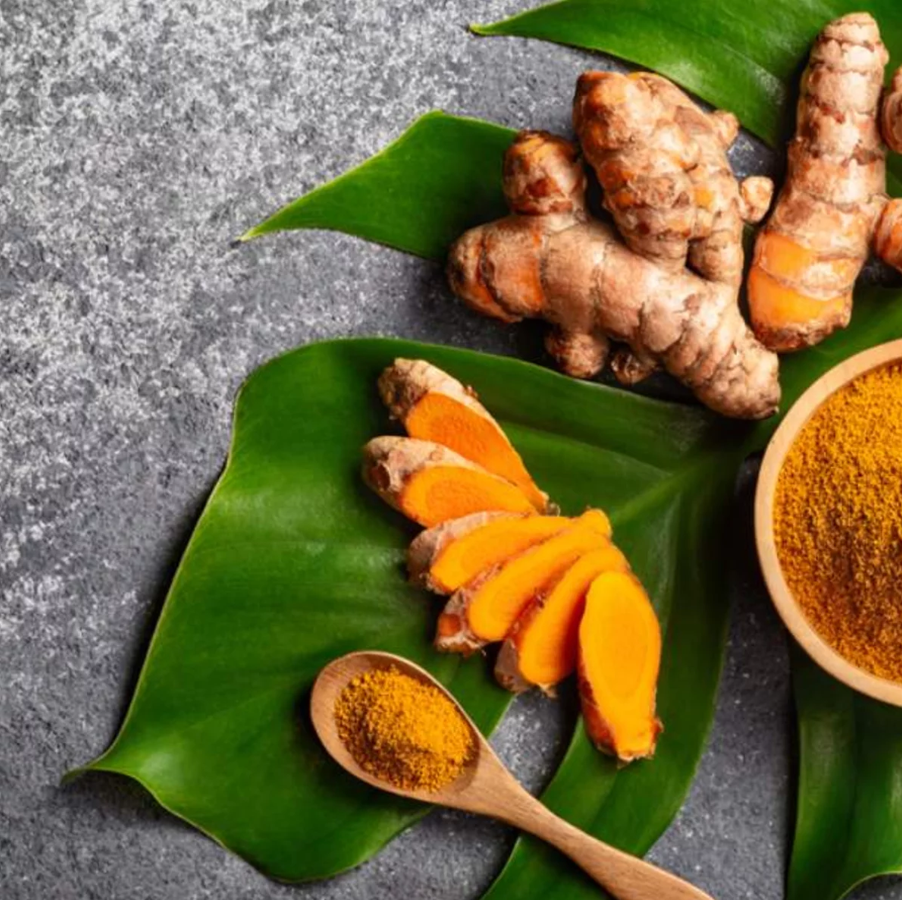TURMERIC (Curcuma longa)
Turmeric is a herbaceous perennial plant, which reaches a height of up to one meter. With highly branched rhizomes, yellow to orange in color, cylindrical and aromatic.The leaves are arranged in two rows. They are divided into leaf sheath, petiole and leaf blade. From the pods, a false stem is formed. The petiole is 50 to 115 cm long. The simple leaf blades are usually 76 to 115 cm long, although they can rarely reach up to 230 cm. It is adapted to warm humid areas.

CULINARY USES
The orange or yellow powder extracted from the plant is mainly used as a food additive. “The European Union has classified turmeric under the name E-100, in the category of food additives that serve as colorants. It provides aroma, flavor and yellow color,” explains Narelia Hoyos, president of the Official College of Dietitians-Nutritionists of Cantabria (Codinucan), member of the General Council of Official Colleges of Dietitians-Nutritionists.
Its flavor is sweet with a spicy and bitter touch, so it is used in small quantities. "ideal for seasoning rice, meat, fish... And its color gives the preparations a very good appearance."

MEDICAL USES
For its part, the antioxidant activity demonstrated by this plant is related to the increase in the expression of the peroxisome proliferator-activated receptor gamma (PPAR-g), the modulation of nitric oxide synthase (ONS) and glutathione, according to in vitro studies.
Likewise, evidence from preclinical studies suggests that turmeric components have antitumor actions, including pro-apoptotic and antiangiogenic effects, as well as effects on the modulation of the cell cycle, the expression of growth factors and on signaling pathways. transduction
